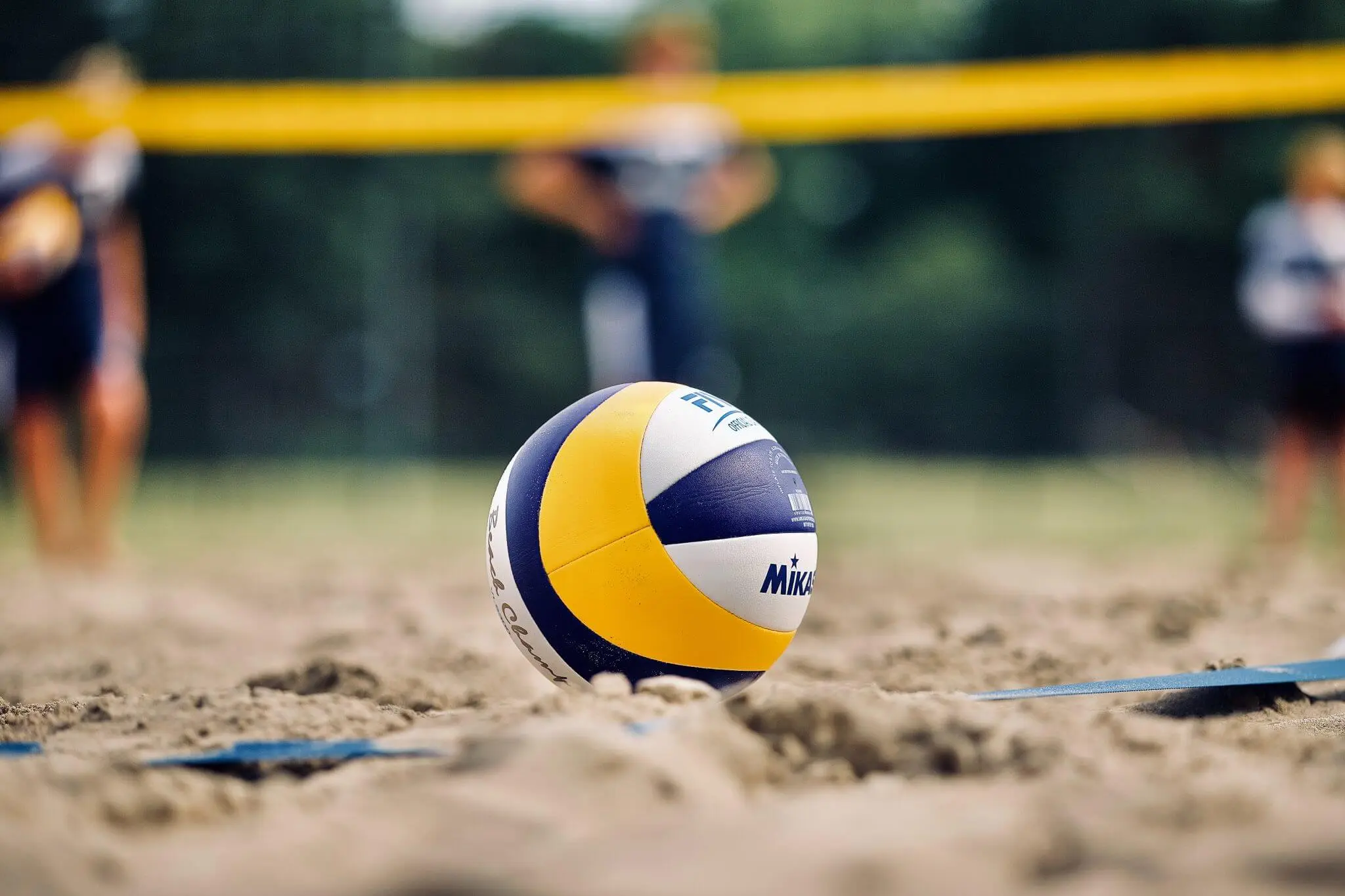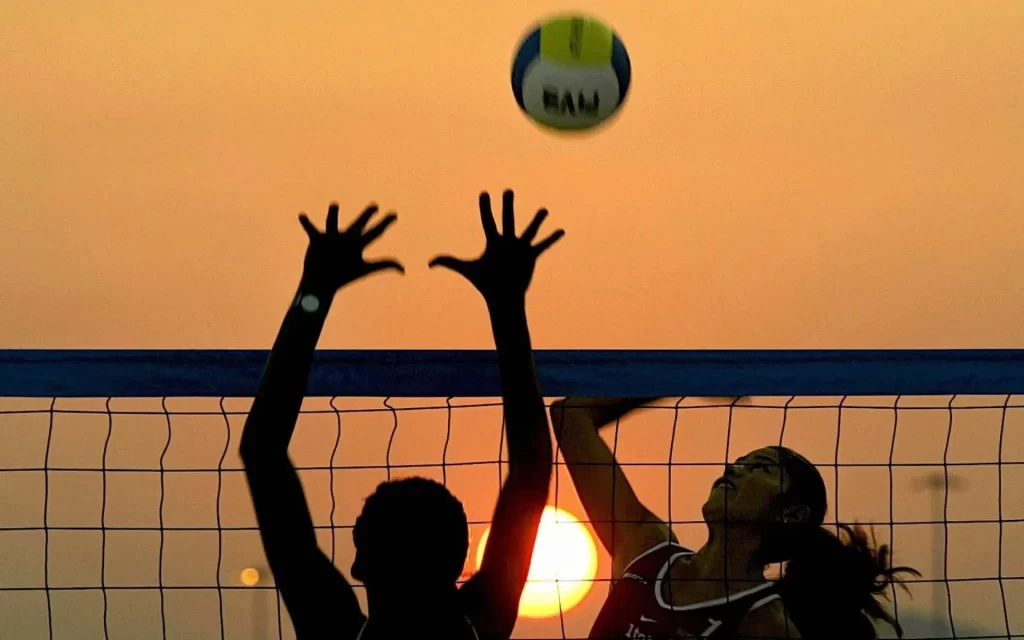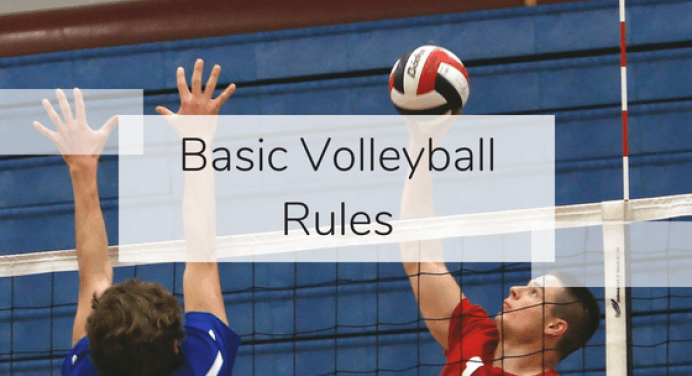Τι είναι ο άσος στο βόλεϊ: (2023)

1. Εισαγωγή
Όταν πρόκειται για τον κόσμο του βόλεϊ, υπάρχει ένας όρος που προκαλεί ενθουσιασμό στο πλήθος: ο “άσος. Αλλά τι ακριβώς είναι ο άσος στο βόλεϊ και γιατί έχει σημασία; Σε αυτόν τον περιεκτικό οδηγό, θα βουτήξουμε στο τις περιπλοκές του να σερβίρεις την επιτυχία στο γήπεδο, να εξερευνήσεις τι είναι άσος, πώς να τον πετύχεις και τη σημασία του στο παιχνίδι.
2. Τα βασικά του βόλεϊ
Πριν εμβαθύνουμε στον άσο, ας ξεκινήσουμε με τα θεμελιώδη στοιχεία του βόλεϊ. Αυτό θα δημιουργήσει τη βάση για την κατανόηση της σημασίας του να παίζετε αυτό το συναρπαστικό άθλημα.
Βόλεϊ: Ομαδικό άθλημα
Το βόλεϊ είναι ένα ομαδικό άθλημα που παίζεται με έξι παίκτες σε κάθε πλευρά του φιλέ. Ο στόχος είναι να κερδίσετε πόντους στέλνοντας τη μπάλα πάνω από το δίχτυ και στο γήπεδο του αντιπάλου, με στόχο να τον κάνει να αγγίξει το έδαφος από την πλευρά του. Το σερβίρισμα είναι μια από τις θεμελιώδεις δεξιότητες στο βόλεϊ. Είναι η πρώτη επαφή που γίνεται με την μπάλα σε ένα ράλι και μπορεί να επηρεάσει σημαντικά την εξέλιξη του παιχνιδιού.
Η ανατομία ενός άσου
Για να καταλάβουμε τι κάνει έναν άσο στο βόλεϊ, ας το αναλύσουμε:
1. Δυνατό σερβίρισμα
2. Τοποθέτηση
3. Περιστρέψτε και στρίψτε
4. Παραλλαγή
Τώρα που αναλύσαμε τα στοιχεία ενός άσου, ας εξερευνήσουμε ορισμένες προηγμένες τεχνικές για να βελτιώσουμε τις δεξιότητές σας στο σερβίρισμα.
3. Τι είναι ο άσος στο βόλεϊ;
Τώρα που έχουμε κατανοήσει τα βασικά του βόλεϊ, ας αντιμετωπίσουμε το κύριο ερώτημα: τι είναι ο άσος στο βόλεϊ;

Ορισμός Άσσου
Στο βόλεϊ , ένας “άσος” είναι ένα σερβίς που οδηγεί απευθείας σε έναν πόντο χωρίς η ομάδα που δέχεται να κάνει παιχνίδι με την μπάλα. Ουσιαστικά είναι ένα σερβίς που αφήνει τον αντίπαλο αβοήθητο, ανίκανο να επιστρέψει την μπάλα με επιτυχία.
Χαρακτηριστικά ενός Άσσου
Ένας επιτυχημένος άσος χαρακτηρίζεται από την ταχύτητα, την τοποθέτηση και το σπιν του. Ένα καλά εκτελεσμένο σερβίς μπορεί να είναι τόσο γρήγορο και στρατηγικά τοποθετημένο που η ομάδα που δέχεται δεν έχει καμία πιθανότητα να αντιδράσει αποτελεσματικά.
Υπάρχουν διάφοροι διαφορετικοί τρόποι για να σερβίρεις έναν άσο, αλλά μερικές από τις πιο κοινές τεχνικές περιλαμβάνουν:
- Float σερβίς: Αυτός ο τύπος σερβίς χαρακτηρίζεται από την έλλειψη περιστροφής, γεγονός που καθιστά δύσκολο για την αντίπαλη ομάδα να προβλέψει πού θα πάει η μπάλα. Τα σερβίς Float μπορούν να σερβιριστούν σκληρά ή μαλακά και μπορούν να τοποθετηθούν οπουδήποτε στο γήπεδο του αντιπάλου.
- Σέρβις Topspin: Αυτός ο τύπος σερβίς σερβίρεται με πολύ περιστροφή, γεγονός που το κάνει να καμπυλώνει προς τα κάτω καθώς ταξιδεύει προς την αντίπαλη ομάδα. Τα σερβίς Topspin μπορεί να είναι δύσκολο να περάσουν, και μπορούν επίσης να χρησιμοποιηθούν για να κάνουν την μπάλα να αναπηδά αδέξια, καθιστώντας ακόμη πιο δύσκολο τον χειρισμό της αντίπαλης ομάδας.
- Υπόχειρο σερβίς: Αυτός ο τύπος σερβίς είναι ο απλούστερος στην εκτέλεση, αλλά μπορεί να είναι ακόμα αποτελεσματικός εάν σερβίρεται με μεγάλη ισχύ και ακρίβεια. Τα κρυφά σερβίς χρησιμοποιούνται συχνά από νεότερους παίκτες ή παίκτες που δεν είναι τόσο άνετοι με τις άλλες τεχνικές σερβίς.
Ο καλύτερος τρόπος για να αναπτύξετε ένα σερβίς άσου είναι να εξασκηθείτε τακτικά και να πειραματιστείτε με διαφορετικές τεχνικές. Είναι επίσης σημαντικό να γνωρίζετε τα δυνατά και τα αδύνατα σημεία των πασαδόρων της αντίπαλης ομάδας, ώστε να μπορείτε να εκμεταλλευτείτε τις αδυναμίες τους.
Ακολουθούν ορισμένες πρόσθετες συμβουλές για το σερβίρισμα των άσων:
Ένα σερβίς άσου μπορεί να είναι ένα πολύτιμο όπλο για μια ομάδα βόλεϊ. Μπορεί να βοηθήσει να σπάσει η ορμή της αντίπαλης ομάδας, να αποθαρρύνει τους παίκτες της και να δώσει στην ομάδα σας ένα σημαντικό πλεονέκτημα. Εάν μπορείτε να αναπτύξετε ένα σταθερό σερβίς άσου, θα είστε πολύτιμο πλεονέκτημα για την ομάδα σας.
Διαβάστε επίσης: Κανόνες βόλεϊ
4. Πώς να πετύχετε έναν άσο
Τώρα που καταλάβαμε τι είναι ο άσος, ας εξερευνήσουμε πώς να πετύχουμε αυτό το πολυπόθητο επίτευγμα στο γήπεδο βόλεϊ.

Mastering the Serve
Το κλειδί για την επίτευξη ενός άσου είναι να κατακτήσεις το σερβίς. Ακολουθούν μερικές συμβουλές για να βελτιώσετε τις δεξιότητές σας στο σερβίρισμα:
Η εξάσκηση κάνει τέλειο.
Εξασκήστε τις υπηρεσίες σας επιμελώς. Η συνεπής πρακτική βοηθά στη βελτίωση της ακρίβειας και της ισχύος.
Ανακατέψτε τα σερβίς σας.
Διαφοροποιήστε τις σερβίς σας με διαφορετικές περιστροφές, ταχύτητες και γωνίες. Κρατώντας τους αντιπάλους σας να μαντεύουν αυξάνουν τις πιθανότητές σας να κερδίσετε.
5. Η σημασία των Άσσων
Ένας άσος στο βόλεϊ είναι ένα σερβίς που οδηγεί άμεσα σε έναν πόντο για την ομάδα που σερβίρει. Είναι ο πιο συνηθισμένος τρόπος με τον οποίο ένας παίκτης μπορεί να κερδίσει έναν πόντο μόνος του. Οι άσοι μπορεί να είναι πολύ αποθαρρυντικοί για την ομάδα που δέχεται και μπορούν να δώσουν στην ομάδα που σερβίρει μεγάλη ώθηση.

Υπάρχουν μερικοί διαφορετικοί τρόποι για να αποκτήσετε έναν άσο. Ο πιο συνηθισμένος τρόπος είναι το σερβίς της μπάλας ώστε να προσγειωθεί στο γήπεδο του αντιπάλου ανέγγιχτη. Αυτό μπορεί να γίνει με το να σερβίρεις την μπάλα δυνατά και με ακρίβεια, ή με το σερβίς της με τρόπο που δυσκολεύει την πάσα των αντιπάλων.
Ένας άλλος τρόπος για να αποκτήσετε έναν άσο είναι να σερβίρετε την μπάλα έτσι ώστε να χτυπήσει στα δίχτυα και στη συνέχεια να αναπηδήσει πάνω από το φιλέ στο γήπεδο του αντιπάλου. Αυτό ονομάζεται “αφήστε το σερβίς” και μετράει ως άσος εφόσον η μπάλα δεν αγγίξει κανέναν από τους αντιπάλους προτού αναπηδήσει πάνω από το φιλέ.
Οι άσοι μπορεί να είναι πολύ σημαντικό μέρος της στρατηγικής μιας ομάδας. Μια ομάδα με δυνατό παιχνίδι σερβίς μπορεί να ασκήσει μεγάλη πίεση στην αντίπαλη ομάδα και να τη δυσκολέψει να κερδίσει πόντους. Οι άσοι μπορούν επίσης να βοηθήσουν μια ομάδα να επιστρέψει από ένα έλλειμμα ή να κλείσει ένα παιχνίδι.
Μια καλή αναλογία άσσου σερβιρίσματος:λάθους είναι περίπου 8–9%. Αυτό σημαίνει ότι για κάθε 100 σερβίς, ένας παίκτης παίρνει 8–9 άσσους. Ωστόσο, ακόμη και μια χαμηλότερη αναλογία άσου προς λάθος μπορεί να είναι επωφελής για μια ομάδα, εφόσον οι άσοι έρχονται σε σημαντικές στιγμές του παιχνιδιού.
Ακολουθούν μερικές συμβουλές για να αποκτήσετε περισσότερους άσους στο βόλεϊ:
Οι άσοι είναι ένα πολύτιμο όπλο στο βόλεϊ. Ακολουθώντας αυτές τις συμβουλές, μπορείτε να βελτιώσετε το παιχνίδι σερβιρίσματος και να βοηθήσετε την ομάδα σας να κερδίσει περισσότερους πόντους.
6. Συμπέρασμα
Συμπερασματικά, ένας άσος στο βόλεϊ είναι ένα σερβίς που καταλήγει σε έναν άμεσο πόντο και επιτυγχάνεται μέσω δεξιοτήτων, εξάσκησης και στρατηγικής. Οι άσοι μπορούν να είναι καθοριστικοί για την απόκτηση ορμής και την εξασφάλιση ενός πλεονεκτήματος πόντων. Έτσι, την επόμενη φορά που θα μπείτε στο γήπεδο βόλεϊ, θυμηθείτε τη σημασία της υποκριτικής και προσπαθήστε να υπηρετήσετε την επιτυχία για την ομάδα σας.
7. Συχνές Ερωτήσεις (Συχνές Ερωτήσεις)
1. Μπορεί ένα σερβίς που αγγίζεται από παίκτη που δέχεται να θεωρείται άσος;
Όχι, για να μετρηθεί ένα σερβίς ως άσος, πρέπει να μείνει ανέγγιχτο από την ομάδα που δέχεται και να καταλήξει απευθείας σε έναν πόντο.
2. Είναι συνηθισμένοι οι άσοι σε αγώνες επαγγελματικού βόλεϊ;
Οι άσοι είναι λιγότερο συνηθισμένοι σε επαγγελματικούς αγώνες λόγω του υψηλού επιπέδου δεξιοτήτων και ευκινησίας των παικτών. Ωστόσο, εξακολουθούν να παίζουν καθοριστικό ρόλο όταν εμφανίζονται.
3. Πώς μπορώ να βελτιώσω την ακρίβεια σερβίς μου;
Η βελτίωση της ακρίβειας σερβιρίσματος απαιτεί εξάσκηση και συνέπεια. Εστιάστε στο να πετύχετε τις περιοχές-στόχους σας και να κυριαρχήσετε διαφορετικούς τύπους σερβίς.
4. Υπάρχουν διάσημοι βολεϊμπολίστες γνωστοί για τους άσσους τους;
Ναι, ορισμένοι διάσημοι παίκτες βόλεϊ, όπως ο Karch Kiraly και ο Flo Hyman, ήταν γνωστοί για τις εξαιρετικές τους ικανότητες σερβίς και άσους.
5. Είναι δυνατόν να πετύχεις άσο με υπαίθριο σερβίς;
Ενώ οι περισσότεροι άσσοι επιτυγχάνονται με σερβίς με το χέρι, είναι δυνατός ο άσος με χειρόγραφο σερβίς, ειδικά αν είναι σε καλή θέση και απροσδόκητο.






